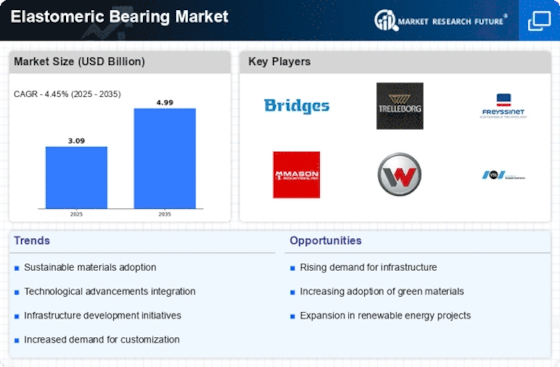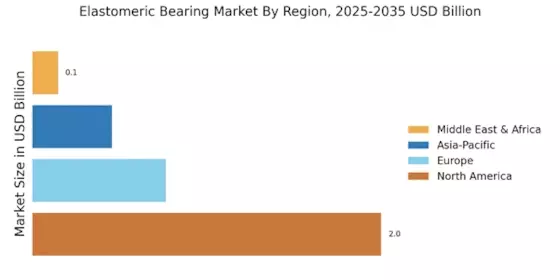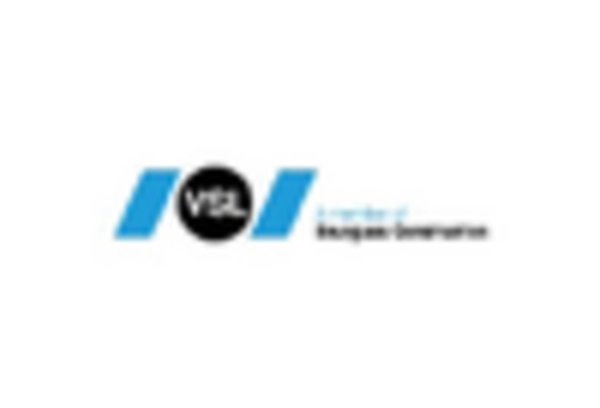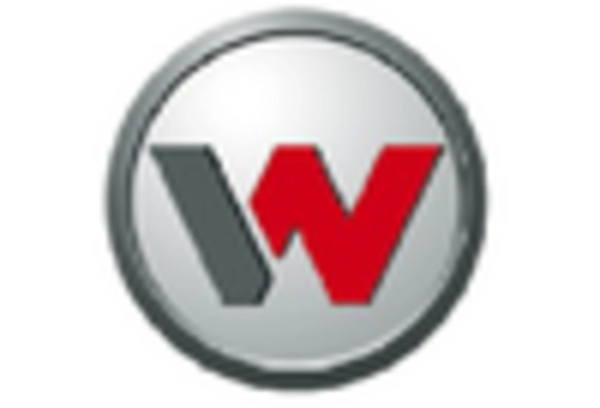Urbanization Trends
Rapid urbanization is reshaping the landscape of the Elastomeric Bearing Market. As populations migrate to urban areas, the demand for efficient transportation systems and infrastructure is escalating. This trend is likely to drive the need for elastomeric bearings in various applications, including bridges and elevated roadways. Data indicates that urban areas are expected to account for over 70% of the global population by 2050, necessitating significant investments in infrastructure. Consequently, the Elastomeric Bearing Market is poised for growth as cities strive to enhance their transportation networks and accommodate increasing traffic volumes.
Regulatory Compliance
Stringent regulations regarding safety and environmental standards are driving the Elastomeric Bearing Market. Many regions have implemented guidelines that mandate the use of high-quality materials and construction practices to ensure the longevity and safety of infrastructure. Compliance with these regulations often necessitates the use of elastomeric bearings, which are known for their resilience and adaptability. The market is witnessing a shift towards products that not only meet regulatory requirements but also contribute to sustainability goals. As a result, manufacturers are increasingly focusing on developing eco-friendly elastomeric bearings, which could capture a larger market share in the coming years.
Infrastructure Development
The ongoing expansion of infrastructure projects worldwide appears to be a primary driver for the Elastomeric Bearing Market. Governments and private entities are increasingly investing in the construction of bridges, highways, and railways, which necessitate the use of advanced bearing systems. According to recent data, the construction sector is projected to grow at a compound annual growth rate of approximately 5.5% over the next five years. This growth is likely to enhance the demand for elastomeric bearings, which provide essential support and flexibility in structural applications. As infrastructure projects become more complex, the need for reliable and durable bearing solutions becomes paramount, thereby propelling the Elastomeric Bearing Market forward.
Technological Advancements
Technological innovations in materials and manufacturing processes are significantly influencing the Elastomeric Bearing Market. The introduction of high-performance elastomers and advanced production techniques has led to the development of bearings that offer enhanced durability and performance. For instance, the integration of computer-aided design (CAD) and simulation technologies allows for the optimization of bearing designs, resulting in products that can withstand extreme conditions. Market data suggests that the adoption of these technologies could lead to a 10% increase in efficiency for bearing applications. As industries seek to improve operational efficiency and reduce maintenance costs, the demand for technologically advanced elastomeric bearings is expected to rise.
Increased Investment in Renewable Energy
The rising focus on renewable energy projects is emerging as a key driver for the Elastomeric Bearing Market. Wind and solar energy installations require robust structural support, where elastomeric bearings play a crucial role in ensuring stability and performance. As governments and corporations allocate more resources towards sustainable energy solutions, the demand for elastomeric bearings in these applications is likely to increase. Market analysis suggests that investments in renewable energy could reach trillions of dollars in the next decade, thereby providing a substantial opportunity for growth within the Elastomeric Bearing Market.


















Leave a Comment